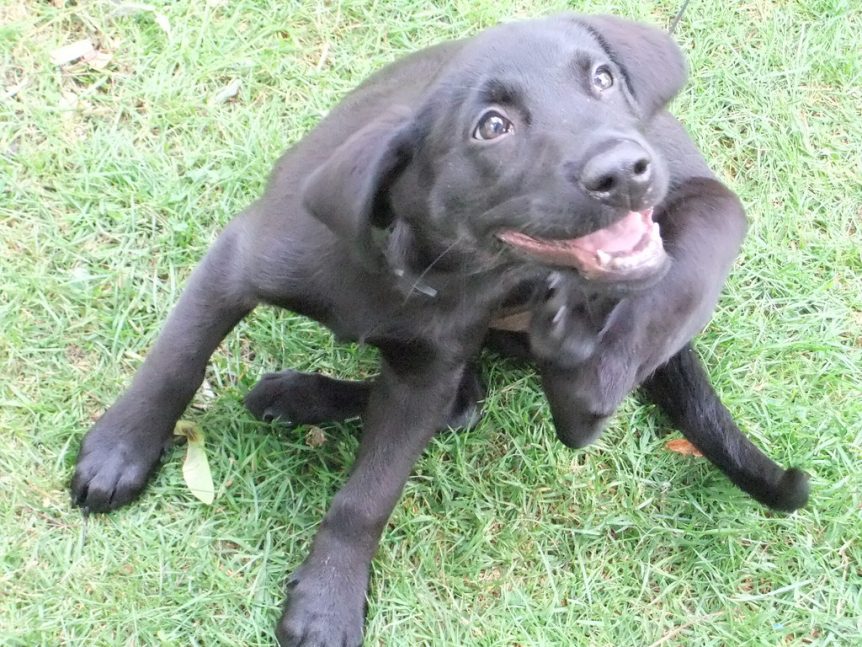Poison Ivy is an all to familiar plant to those that enjoy that outdoors. It also causes the all too familiar red, itchy rash when the plant comes into contact with skin. Even worse, the plant’s oils are annoyingly resilient and cling to your clothes as well as your pet’s fur. After any exposure, thoroughly wash your pet to prevent them from bringing home and spreading the oils to you and your family.
Have you ever wondered if poison ivy affects dogs the same way it affects us? Although the oil of the plant isn’t as toxic to dogs as it is to us, they can have a similar reaction if it comes into contact with their skin. Most dogs are fortunate to have thick hair which helps to protect their skin if it comes into direct contact with the plant’s oils. The most common areas of affliction for a dog are along their stomach, groin and even on their nose! Similar to humans, the symptoms will appear as an itchy rash, around 3 to 7 days after exposure. It is important to keep your dog from licking their rash. In more severe cases, the rash can develop into blisters filled with fluid. When these blisters pop, they can further spread the rash and can lead to bacterial or fungal infections. If your dog begins to have diarrhea or starts to vomit, bring them to a veterinarian to help alleviate their gastrointestinal upset.
Below is a list of the more common symptoms your pet may experience if exposed to Poison Ivy:
- Red skin that may swell and itch
- Blisters or scabs (can become filled with fluid)
- Vomiting (if Ingestion)
- Diarrhea (if ingestion)
Avoid playing or walking with your dog through patches of poison ivy and DO NOT let them eat any. If you notice any Poison Ivy growing in your yard, make sure you remove it as soon as possible to avoid gastrointestinal upset. If your dog has ingested any of the plants, contact a poison hotline or contact your McLean, VA veterinarian. It is important to know exactly what type of plant, as well as how much they have eaten along with their weight, height, and age. If it’s possible, safely collect a sample and place it in a bag and bring it to your appointment with your pet’s doctor.
If you believe your dog has gotten into Poison Ivy, wash any areas of your dog (with soap and water) that you believe could have come into contact with the plant. Watch to see if they develop any kind of rash. Again, it may not appear for up to a week. So keep an eye on them and if you notice any rashes, contact your veterinarian. Give us a call at 703-356-5000 if you have any questions or if you notice any symptoms that are cause for concern.

